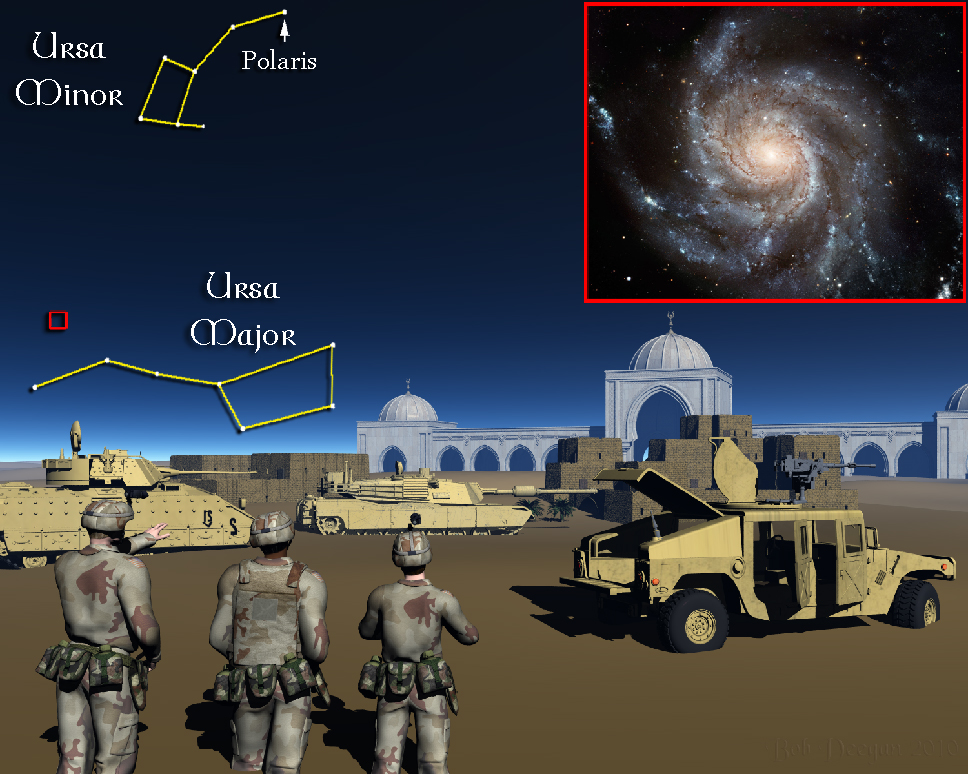
For the week including January 1, 2010

SHARING STARS
I’ve been glad to hear from some readers that they send this column to family members in the military to give them a touch of home. At this time, while we celebrate here, it’s also good to remember the men and women we care for who are serving in dangerous places half-way around the world. So, to those of you overseas, please keep safe. Our thoughts are with you and if you look to the northern sky tonight, know that we will be looking at those same stars. No matter the separating distance, the stars can bring us a bit closer together.
In the northern hemisphere, there are stars that can be seen year round everywhere on the planet. They are gathered around Polaris, the North Star. So, the constellations we’ll use for our remotely shared view will be those of the Bears, Ursa Major and Ursa Minor, otherwise known as the Big and Little Dippers.
The Little Dipper: This is really the constellation Ursa Minor, named the Lesser Bear because of its resemblance to a bear cub. Well, OK, maybe I don’t think it does either. The Little Dipper has the North Star at the end of its handle. A quick way to find it is to use the two stars that form the far edge of the Big Dipper’s bowl. Follow these stars straight outward and you will come to Polaris, a star that looks brighter than any of the stars around it.
For SPC Sean Durbin and the folks in the 301st, the Dippers will be situated differently at sunset. At latitudes closer to the Equator, these constellations will be nearer the horizon. But because the Earth’s rotation causes the stars we see in the sky to wheel counter-clockwise around Polaris, you’ll be able to find both Dippers as the evening goes by.
Unless otherwise indicated, all content of this web site is the copyright of Robert Deegan and all rights are reserved.
For more information, or to comment, please contact: Bob@NightSkies.org